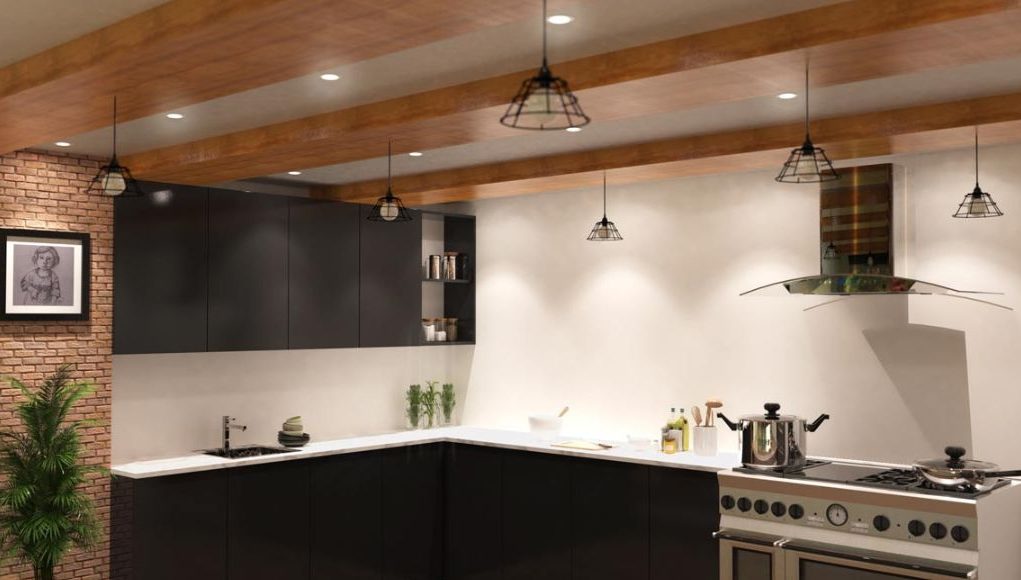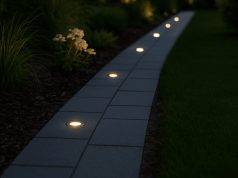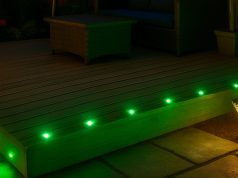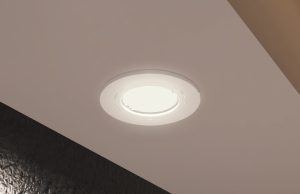Although LED downlights emit less heat compared to non-LED fixtures, you cannot assume that all of them are alright to cover with insulation. You need to be aware of whether the LED downlights that you are using are okay to be in close proximity to combustible material.
Technically, you’re not advised to directly envelope LED downlights with insulation because of fire concerns. However, there are IC (insulation contact) rated downlights that are safe to enclose with insulation!
What are the precautions to take when covering LED downlights with insulation? What and how does insulation contact work? Can you really save energy with LEDs? If you want to know the answers to these questions, all you have to do is continue reading!
Is it okay to cover LED downlights with insulation?
Before you dive into the electrical process, you need first to understand the equipment you’re using. In normal circumstances, you cannot cover LED downlights with insulation. However, with an IC-rated LED fixture, you’ll be able to encapsulate it inside three inches of insulation safely.
The most critical factor that you need to watch out for here is the IC rating. While LEDs are inherently energy-efficient, they can still produce heat. So, to guarantee the fire protection of your home, use an insulation coverable downlight if you want to blanket your fixtures with insulation. Otherwise, leaving enough space for your lights to release the heat it produces is recommended. You need to keep it away from combustible elements to assure the safety of your home, family and fixture.
How does Insulation Contact (IC) work?
How would you know if your fitting is IC-rated? Aside from reading the labels, you need to check if the fixture is 100w or below (generates less heat), can protect itself from possible combustion, and uses either a double can or can within a can to dissipate heat.
The can within a can design is when the inner can creates the most heat while the outer can is positioned over the inner can to keep everything cool enough to enable the fixture to come into contact with the insulation. This method provides the fitting necessary cushion to be installed but does not emit a dangerous amount of heat.
While IC-rated downlights appear more expensive than fire-rated downlights, they’re more energy-efficient and safer, making the extra cost worth every penny! Aside from that, all insulation coverable LED downlights will be marked so installation will be effortless and straightforward. You just need to note the markings, as it’s essential during the mounting process.
Why should you use insulation with your light fixture?
At this point, you may be wondering, do you really need to insulate your light fixtures? Insulating your lights can be beneficial for you, your family and your fittings. How?
Extra Efficiency
Since there’s no thermal gap of air due to keeping the fixture away from the insulation, the air cannot escape. Without the opening, you’ll have better-insulated space, making it more energy-efficient.
Keeps Moisture Out
If you’re using an IC-rated downlight and insulate behind, you design a 99% airtight seal. How does your light benefit from this? Condensation may happen if warm air hits your roof on a cold day. When that moisture comes into contact with your fixtures, it can cause some damage.
When investing in improving your home, make it count and go for the best products so you won’t regret anything and create more expenses. If the extra bucks justify the potential savings that you can earn, it won’t hurt to consider the idea!
LEDs vs Traditional Light Fixtures: Which is better?
LED lights are better than traditional light fixtures because of several factors.
- IC-rated LED lights can be insulated, whereas traditional fixtures cannot because they tend to produce so much heat.
- LED fixtures can last ten times longer than a traditional fitting.
- LED lights are about 35% more efficient than fluorescent lamps and 85% more efficient than traditional fitting.
Although traditional light fixtures are more affordable, in the long run, you’ll see that you’re actually spending more in terms of maintenance and energy consumption. LEDs may initially appear pricier, but your expenditure is less in the long run.
How much are you actually saving?
If you want to get the numbers to visualise better the disparity between an LED fixture and a traditional fitting, here are the figures that you need to consider.
Cost of the Fitting
Typically, a regular LED bulb will cost about £4 each, but you can get a smart LED bulb that will enable you to connect your lights on your phone at about £10 each. A regular non-LED light bulb will cost about £1 each.
You may think that it’s better to get the £1 bulb. However, one LED bulb is equivalent to about 40 traditional bulbs in terms of lifespan. So, where should you invest your hard-earned money if you do the math?
Power Savings
Do you know that you’re charged per KWH on your energy consumption? If your regular LED bulb runs at 10w and you’re charged £0.10 per KWH, then your 25,000-hour LED light bulb would cost around £25 for the duration of its life.
Now let’s apply it to a non-LED bulb. For the same £0.10 per KWH, a 60w traditional bulb with an average lifespan of 1,200 hours will cost you £7.20 throughout its timespan. Think this is the right deal? Here’s the catch. You’ll need a few more traditional bulbs to meet the exact lifespan of 25,000 hours for one LED bulb. Roughly, it may cost you about £150.
With LEDs, you can save a significant amount of money due to their efficiency and lifespan. With traditional bulbs, you only get a fraction of that savings. Still, the numbers will shift depending on your location and the number of bulbs that you’re using. However, at the end of the day, nothing beats LEDs when it comes to cutting back on your expenses!
There are benefits to using LED lights and adding insulation to your fixtures. You just need to do it right and get the suitable material for the job to ensure the safety of everyone and everything in your home. Get IC-rated downlights and consult an electrician if you’re not confident doing the installation alone. If you have any lighting needs, check out our website, Simple Lighting! We have an extensive collection of bulbs, downlights, strip lights, commercial lights, outdoor lights and more.













